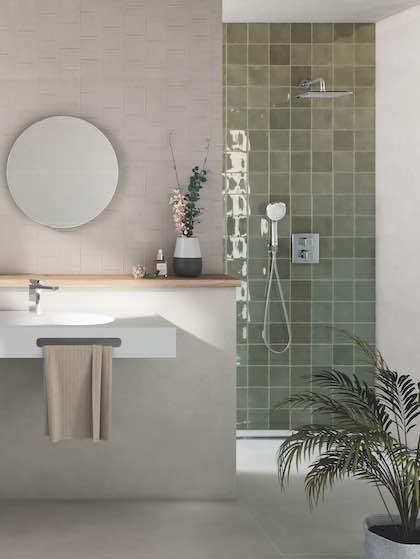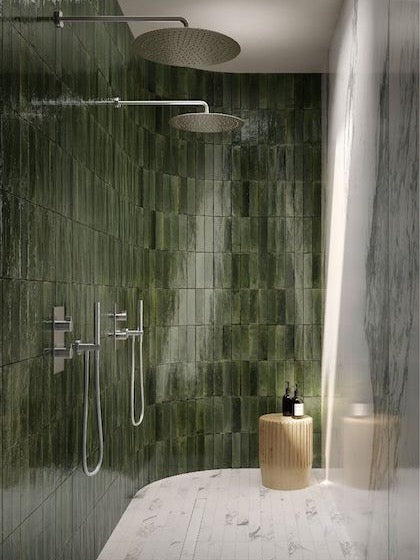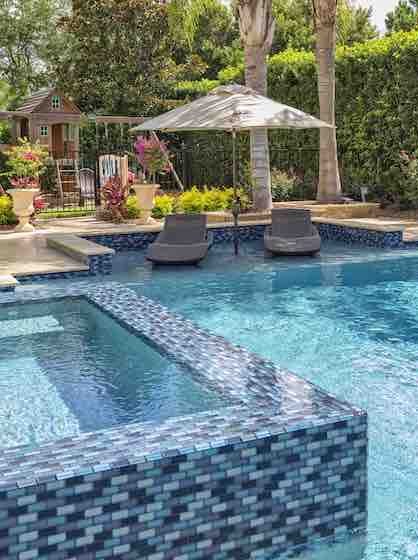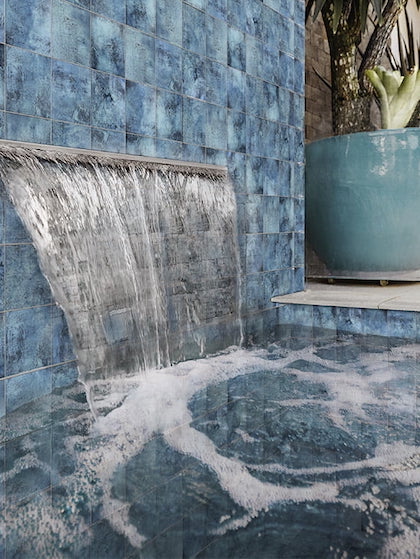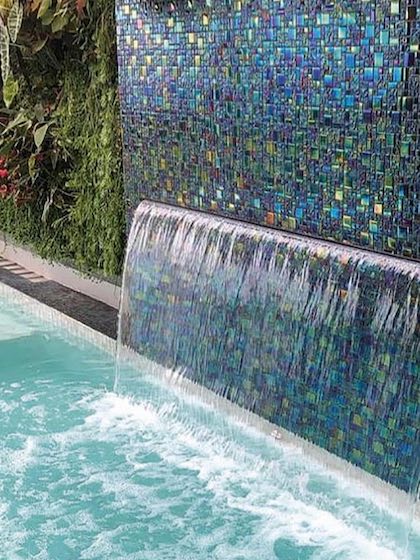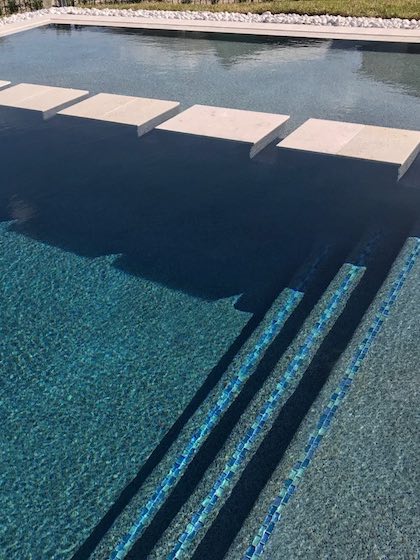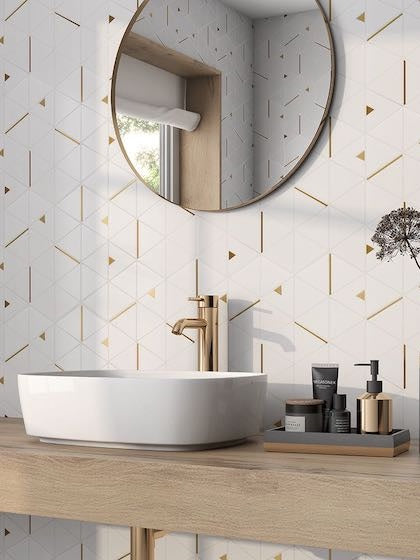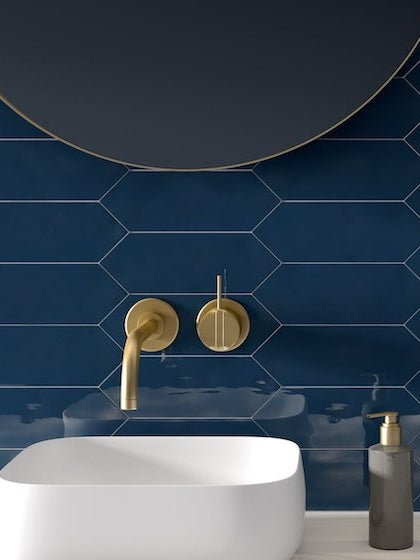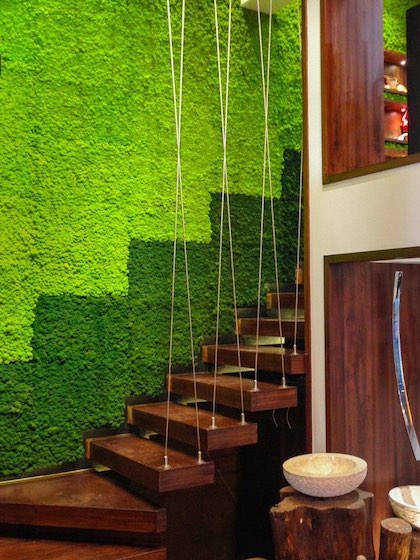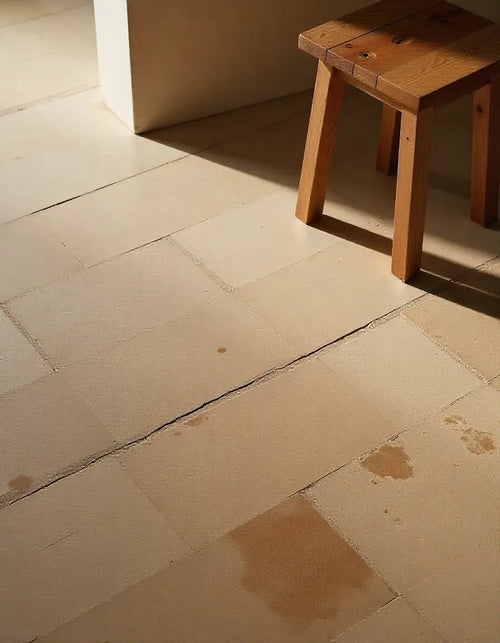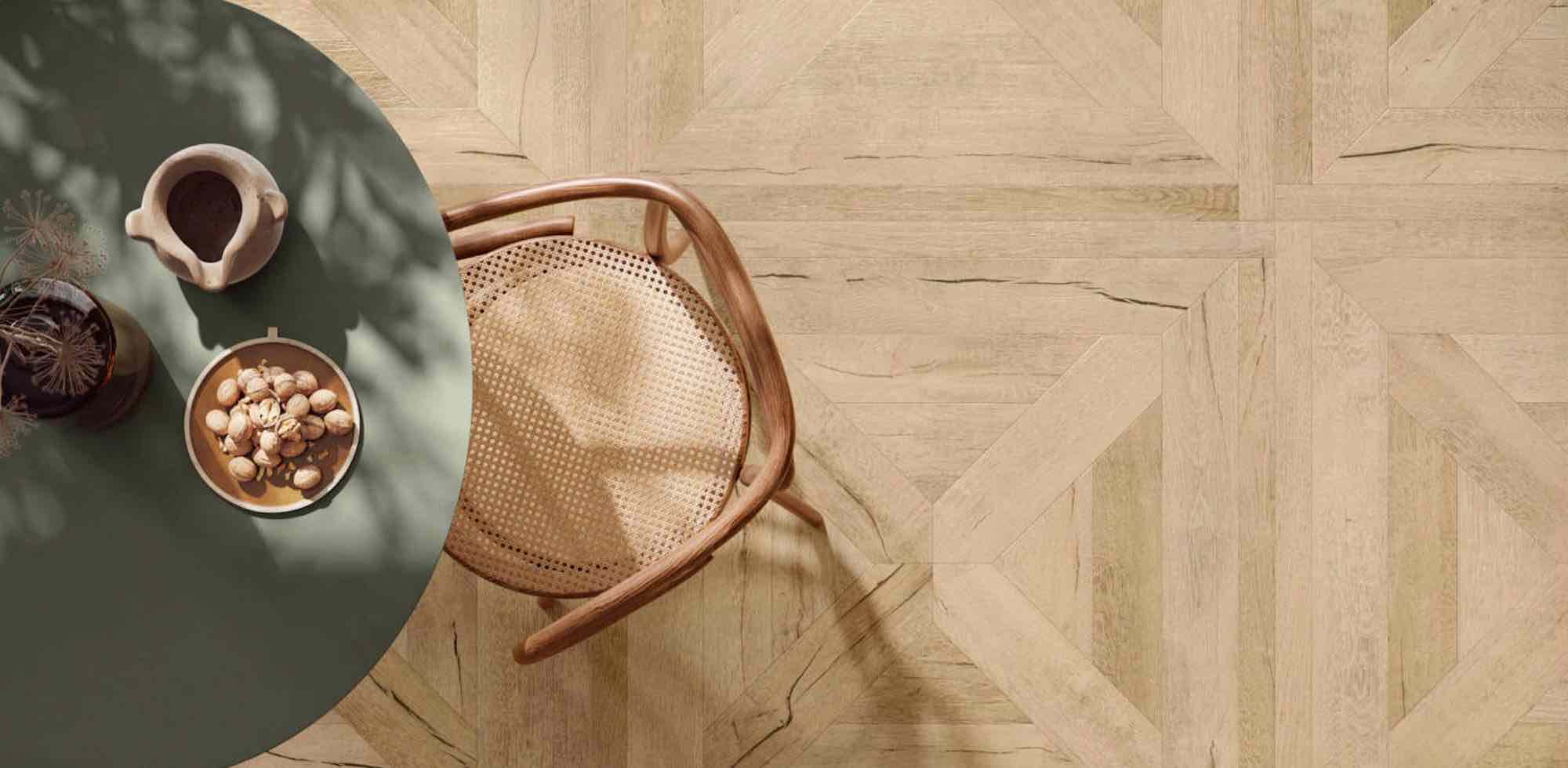What are Distressed Tiles?

Distressed tiles are designed to simulate wear, aging, or patina — giving walls or floors a vintage, rustic, or industrial flair. These tiles often feature chipped edges, uneven glaze, and subtle color variation that mimics real weathering.
Materials
Commonly, distressed tiles are made from ceramic, porcelain, or natural stone — all engineered to provide that aged aesthetic without compromising durability.
Pros
- Add character and texture to any space
- Hide dirt and small imperfections better because of their irregular finish
- Very versatile: fit in farmhouse, industrial, or shabby-chic interiors
Cons
- Because of the surface texture, they may be harder to clean
- The distressing effect depends heavily on quality; cheap versions might look fake
- Less uniform, which can make installation more challenging
Also Read the Detailed Pros and Cons of Distressed Tile Flooring
Best Use Cases
- Accent walls in living spaces or bathrooms
- Backsplashes with a rustic or vintage touch
- Places where design personality matters more than minimalism
Shop Distressed Look Tiles Now
What are Subway Tiles?

Subway tiles originated in early 20th‑century New York City subway stations. Their characteristic shape — usually rectangular (3×6 inches) — has made them a timeless staple in interior design. Today, subway tiles come in many finishes (glossy, matte, beveled) and sizes.
Modern Variations
- Matte vs. glossy finish
- Different sizes: beyond classic 3×6, you can find 4×12, etc.
- Alternative layouts: vertical stack, herringbone, etc.
Pros
- Very clean, minimalist look
- Widely available and often affordable
- Easy to match with many design styles — traditional, modern, transitional
- Reflects light well (especially in the glossy variant), which brightens small spaces
Cons
- Repetitive design may feel too "safe" or overused
- Visible grout lines can demand more maintenance
- Very glossy subway tiles can show smudges easily
Best Use Cases
- Kitchen backsplashes
- Bathroom walls or showers
- Spaces where clean lines and simplicity are desired
Timelessness Factor: A Direct Comparison
Aesthetic Versatility
Distressed tiles offer personality and depth — ideal when you want the tile itself to be the focal point. Subway tiles deliver neutrality and simplicity, making them the most flexible option for evolving design trends.
Longevity & Durability
Both tile types are long-lasting. Porcelain distressed tiles and ceramic subway tiles can hold up for decades with proper installation.
Maintenance & Upkeep
- Distressed tiles: Require slightly more care due to textured surfaces.
- Subway tiles: Smooth, wipe-friendly surfaces make cleaning simple.
Design Compatibility
Subway tiles win broadly here — they adapt to modern, traditional, farmhouse, vintage, or industrial styles. Distressed tiles are more niche but create a stronger visual impact.
See Stylish Subway Tile Pattern Ideas for Your Space
Cost Comparison Table: Distressed Tiles vs Subway Tiles
| Feature | Distressed Tiles | Subway Tiles |
|---|---|---|
| Average Price (Per Sq Ft) | $8 – $25+ | $4 – $12 |
| Installation Cost (Per Sq Ft) | $12 – $22 | $8 – $18 |
| Maintenance Requirements | Medium to High | Low |
| Durability | High | Very High |
| Design Flexibility | Medium | Very High |
| Grout Considerations | Wide/varied for vintage effect | Easily customized for look |
| Availability | Selective, curated collections | Widely available |
Styling Tips & Installation Ideas
- Mix textures: Pair distressed tile with polished metal fixtures (brass or black) to create contrast.
- Play with layout: Use herringbone or vertical stack with subway tiles to make them feel less standard.
- Color and grout choice: For subway tiles, different grout colors (dark, light, or matching) can dramatically change the look. Designers often recommend contrasting grout to accent the tile shape.
- Sampling: Order whole-piece swatch samples from Mineral Tiles (sample cost is low) — this helps you assess texture, color variation, and how “real” the distressing looks.
Conclusion
Choosing between distressed tiles and subway tiles depends on the mood, personality, and long-term design outcome you want to achieve. Distressed tiles excel when you want authentic character, handcrafted charm, and vintage richness. They transform everyday walls into curated design statements.
Subway tiles, however, remain the gold standard of timeless interior design. Their simplicity, adaptability, and clean geometry make them a safe, stylish, and long-lasting investment for kitchens, bathrooms, and beyond.
If you're torn between the two, order samples and evaluate them in real lighting. Mineral Tiles curated collections make it easy to explore both aesthetics and confidently select the tile that resonates with your vision and lifestyle. Your home deserves design that lasts — these tiles deliver exactly that.

